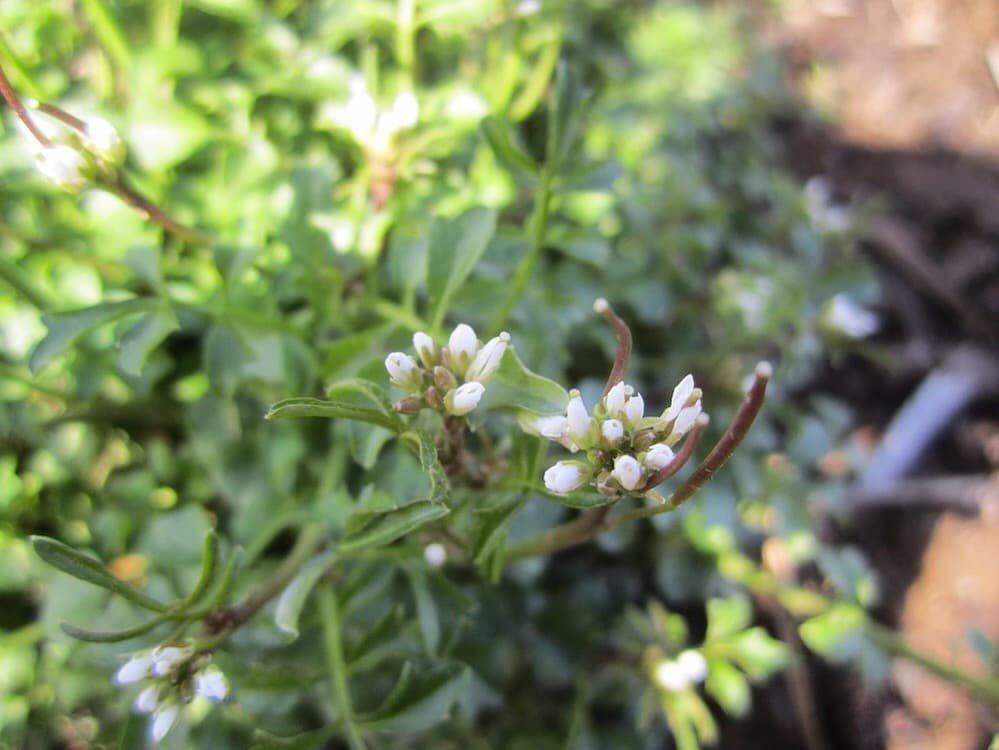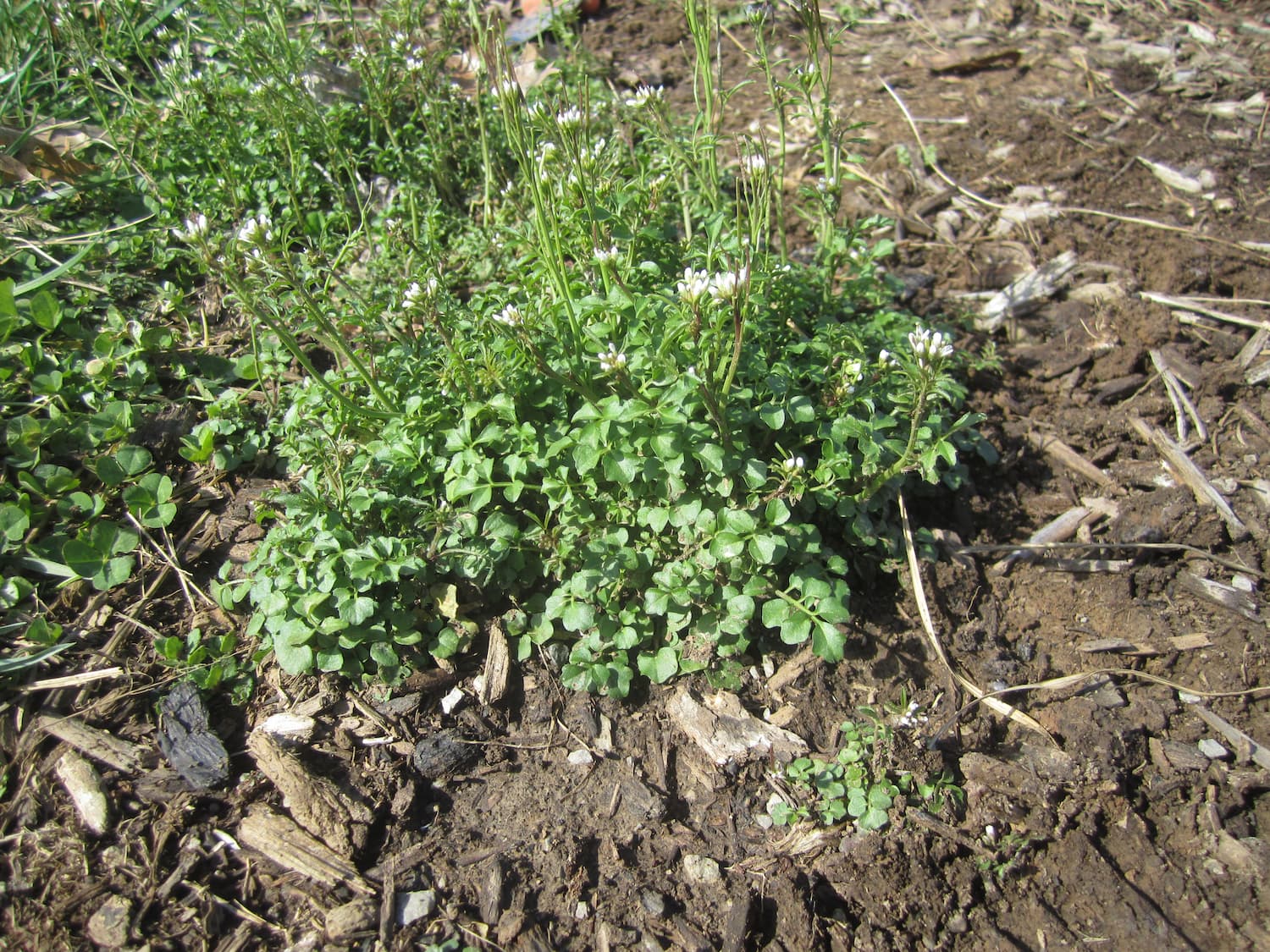How to Identify Hairy Bittercress — Foraging for Common Edible Weeds
- Authors
- Name
- Sam Sycamore
- @tanoaksam
- Published on
- Last updated
Table of Contents
- What is hairy bittercress?
- Is hairy bittercress edible?
- Key characteristics
- Etymology and taxonomy
- Common names
- Taxonomical lineage
- Where to find hairy bittercress
- When to gather hairy bittercress
- Why forage for bittercress?
- How to harvest and prepare bittercress
- How to sustainably work with bittercress
- Lookalikes
What is hairy bittercress?
Bittercress is a common cool-weather garden weed; a tiny, tender annual herb that you probably don't notice growing all around you—until you start looking for it.
Is hairy bittercress edible?
Yes, all parts are edible.
Key characteristics
- basal rosette growth habit
- compound leaf terminating in kidney-shaped leaflet
- distinct brassica flower stalk, flowers, and seed pods
- mature seed pods will pop open when touched, thus the common name popweed

Bittercress shows off its Brassica traits when in bloom.
Etymology and taxonomy
Common names
Hairy bittercress, garden cress, pepper cress, popweed.
Taxonomical lineage
- Brassicaceae (Mustard / Brassica) family —Cardamine genus —C. hirsuta species
Where to find hairy bittercress
Commonly found in gardens and ornamental landscaping beds; often in marginal, bare, recently disturbed soil. Also common as a weed in sidewalk cracks in urban environments.

You can see the distinct kidney shape of the terminal leaflet when observing a single tiny leaf.
When to gather hairy bittercress
Often germinates through the fall and winter and matures early in spring. Completes its life cycle in conjunction with spring ephemeral wildflowers.
Why forage for bittercress?
After chickweed, hairy bittercress is perhaps the next most common edible "weed" you're likely to discover in your backyard garden. As a member of the Brassicaceae family, bittercress has a very sharp, peppery flavor, not unlike arugula or radish greens.

Bittercress can quickly take over bare soil if left unchecked.
How to harvest and prepare bittercress
Harvest the greens anytime you find them out on the land. Pluck individual leaves or cut the whole rosette at soil level. C. hirsuta is best earlier in the season, as it may become too bitter and unpalatable for some once it goes to seed in spring. Consume raw, and use as a garnish in salads, sandwiches and soups.
May be used as a substitute in recipes that call for watercress or arugula. Will generally wilt very quickly after harvesting, so it's best to eat immediately. Expect the plant to resprout from its extremely long taproot, regardless of whether or not you attempt to extract it.
How to sustainably work with bittercress
Bittercress is a ubiquitous weedy plant that doesn't need any help proliferating. In fact, it is a common and seemingly perpetual nuisance for gardeners and landscapers, who sometimes target bittercress with chemical herbicides. This is a myopic and largely futile approach: bittercress isn't going anywhere, anytime soon.
Lookalikes
None. May bear a passing resemblance to other brassicas with "cress" in their common name, such as watercress, but these plants are also edible and easy to distinguish.
Foraging North America
Did you find this article helpful?
This is an excerpt from Foraging North America: The Botany, Taxonomy and Ecology of Edible Wild Plants.
Foraging North America is a 12-week crash course designed to arm you with a functional working knowledge of botany and taxonomy that you can take with you out onto the land to fast-track the ID process and boost your confidence when gathering wild foods for the first (or five-hundredth!) time.
You'll get a practical education in ecological literacy by applying the ethos of conservation through use—the (surprisingly) radical notion that humans can, in fact, have a positive impact on the environments that we move through.
Food is everywhere—you just need to know what to look for!